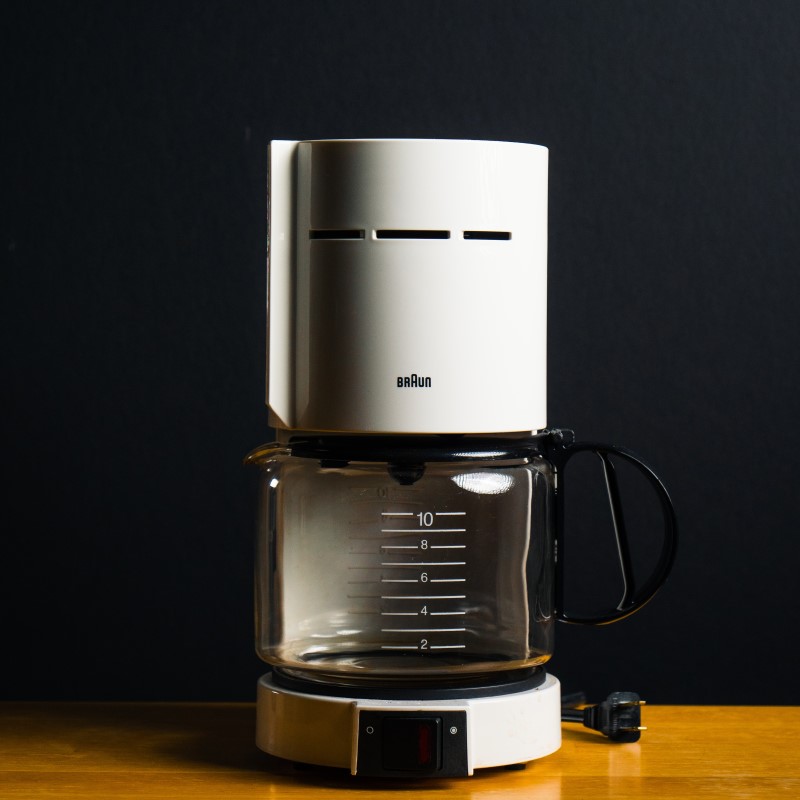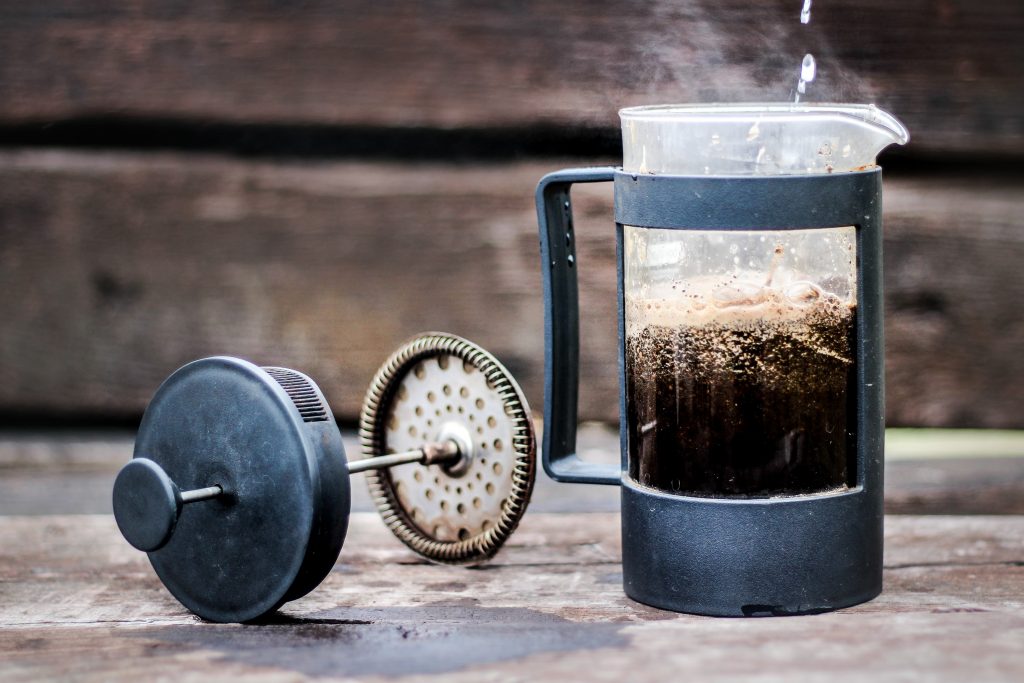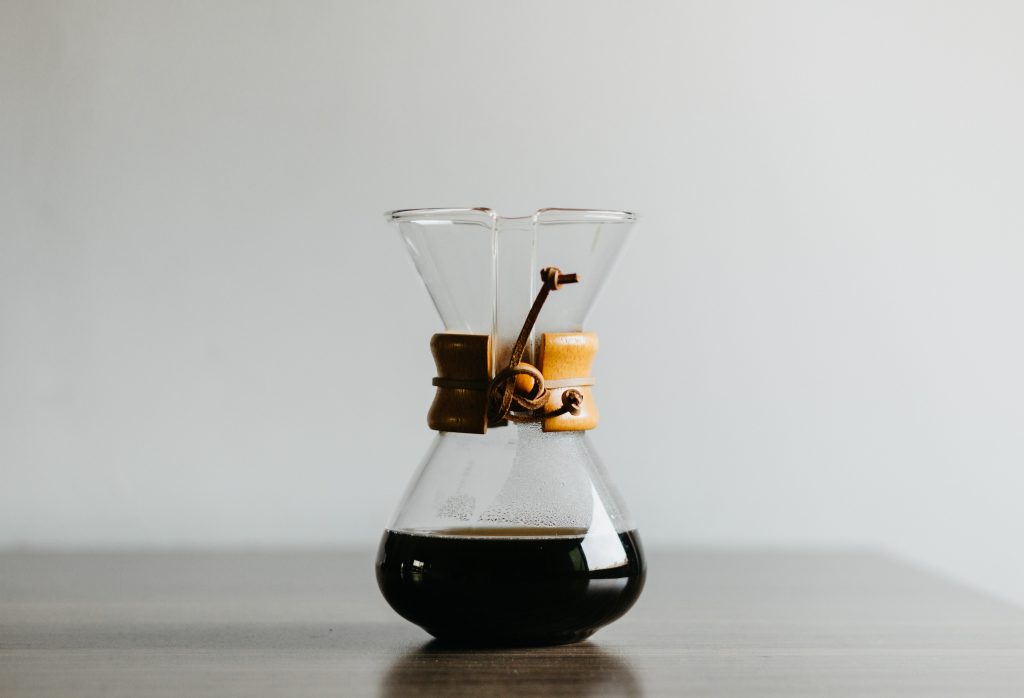Many who treasure the taste of freshly brewed coffee are willing to invest in quality coffee beans and home brewing equipment. However, getting the most out of premium coffee beans means protecting that equipment. Learning how to clean coffee makers will help you protect your investment.
What happens to your coffee maker over time?
Hard water deposits and oils from ground coffee can build up in your brewing equipment. The buildup of leftover grounds and caffeol (coffee oils) can result in a bitter-tasting cup of coffee.
Overall, hard water has a higher mineral concentration of magnesium, calcium, and limestone – all of which contribute to blockages in an automatic drip coffee maker over time. In addition, the buildup of hard water minerals can also contribute to a bitter taste.
Even more troublesome than mineral buildup is bacteria, yeast, or mold that can grow without regular or proper cleanings. Drip coffee makers, specifically, provide the ideal environment for these harmful things to flourish with the warmth and moisture they produce. An NSF study found that half of households had yeast and mold in their coffee makers.
Remember, bitter-tasting coffee may be the least of your worries if you are dealing with an unclean coffee maker. Learning how to clean your coffee maker can save you from health issues ranging from allergy symptoms, including coughing, headaches, sneezing to gastrointestinal issues and upper respiratory infections.

Let’s begin by learning how to clean a drip coffee maker.
Four in ten coffee drinkers in the United States use a drip coffee maker to brew their coffee. Many consider this method to be a convenient way to brew coffee. However, the brewing convenience may become overshadowed by the ease at which harmful bacteria, mold, and yeast can grow in it.
Your cleaning ritual should occur each time you brew coffee and include rinsing the carafe and all removable parts using warm soapy water. The easier option is to place the parts in the dishwasher if the manufacturer indicates it is safe to do so.
Wipe down the outer body of the drip coffee machine with a damp cloth.
The coffee maker will need a deeper cleaning monthly. The more diligent you are about cleaning it after each use, the easier deep cleaning will be.
A monthly vinegar wash is recommended for drip coffee makers.
- Start by pouring equal parts distilled vinegar and water into the empty reservoir of the coffee maker.
- After putting the carafe and a filter in place, run the brew function until about half the vinegar-water solution fills the carafe.
- Turn off the coffee maker and let the remaining vinegar-water solution sit for 30 minutes.
- Turn it back on and brew the remaining solution.
- Empty the carafe.
- Replace the filter and brew a full carafe of clean water at least twice to remove any remaining vinegar.
After any cleaning, remember to empty any leftover water from the reservoir and be leave the lid open so the interior can air dry completely.
If your carafe also has some buildup, agitate soapy water and some rice inside to loosen any stubborn residue. Rinse and scrub if necessary.
As other brewing methods become popular, it is helpful to learn how to clean different types of coffee makers.
Besides drip coffee makers, several other brewing methods can produce different taste experiences. Whatever brewing method you select, keeping the coffee maker clean is equally important.

Cleaning a French press after each use is relatively easy.
Start by making sure the carafe is cool before you begin cleaning it.
- Remove the plunger and fill the carafe with warm water.
- Use a bottle brush or something similar in size to scrub the inside of the carafe. Use dish soap or baking soda to remove any residue.
- Make sure you thoroughly rinse out all the different residues.
- Remember to rinse and scrub the plunger to remove any coffee grinds from it.

AeroPress coffee makers may be a little more challenging to clean compared to french presses.
Oils and grinds can build up in the AeroPress chamber. There are a few different ways to ensure your AeroPress brews an optimal tasting cup of coffee.
- Ideally, rinse all the AeroPress parts in hot tap water after each brewing, including the plungers, cylinders, and filter cap. Be sure to clean the oil buildup on the vacuum seal at the end of one of the cylinders.
- If you have cleaned your AeroPress less frequently, there’s a good chance you’ll need to add mild dishwashing soap to your process. First, create a bath with warm water and soap. Take apart the plungers, place all the parts into the soapy bath, and let them soak for at least a few minutes. To prevent any damage, use your fingers, instead of a sponge or brush, to scrub away residue.
- For stubborn buildup, add a splash of vinegar to warm water and let the parts soak for at least 20 minutes, but ideally overnight if this residue is particularly tough.
- On a less frequent basis (monthly), you can include your AeroPress parts in a dishwasher load.

Cleaning a pour over coffee maker can be relatively easy if done regularly.
Learning how to clean a pour over coffee maker is not complicated and the process is similar to that of other coffee maker types.
With any cleaning process you choose, make sure the carafe is completely cool beforehand, emptied of liquids and grounds, and the wooden handle/collar is removed.
Daily cleaning involves swishing warm soapy water (made from unscented dish soap) around in the carafe. It is also safe to clean it in the dishwasher. Make sure it has a cushion of space around it so it does not knock against other items in your dishwasher.
Similar to the other types of coffee makers, vinegar works well to deep clean a pour over coffee maker. Over time, the glass can also accumulate oily residue from the coffee grounds and mineral deposits from the water used to brew coffee.
You can deep clean a pour over carafe by soaking it in equal parts of water and distilled vinegar for at least a few hours or longer. After soaking, use a plastic or wooden handled bottle brush to gently scrub the carafe as you rinse the vinegar-water mixture off. Do a final rinse with unscented dish soap and warm water to eliminate the vinegar smell.
Burman Coffee Traders offers a selection of high-quality coffee makers.
If you have questions about any of the coffee makers we offer, including maintenance of them and accessories available, please contact us. Our coffee experts are ready to answer your questions and help you select the best coffee maker for you.




Thanks for the article! Just curious if you’ve ever experimented with cleaning coffee equipment with citric acid? I think it may be easier to rinse, and not leave residual flavors.
i use this for some of my stainless beer equipment.. very good suggestion
If you have a Technivorm brewer, avoid vinegat and citric acid products.
From the Technivorm web site:
“We do not recommend using vinegar or citric acid to descale as they might damage the machine, leave an unpleasant taste, or cause issues with your Moccamasters’ mechanical parts.
NOTE: Please refrain from using descalers with high citric acid content, such as a biodegradable descaler.
The citric acid can cause a chemical reaction with the copper of our heating element, resulting in a persistent bad taste.”
Once a month I clean my Stainless Mocco using a dish washing pod placed in the stainless coffee pot. Fill container with water, turn on to brew, Let sit for 1 hr., then run clean water through the system five times. The stainless steel will sparkle and it’ll brew great coffee with no bitterness.